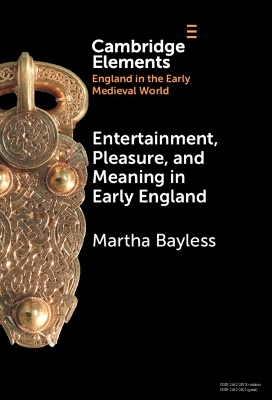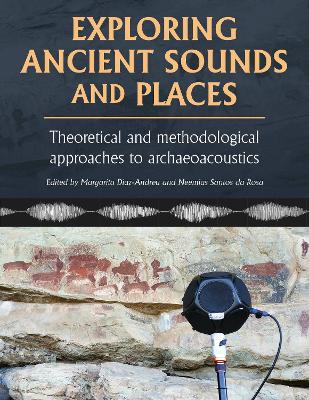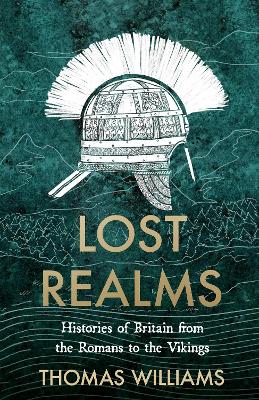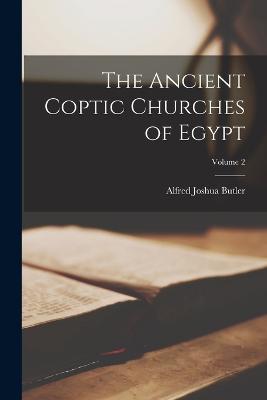Reconstructing Past Monastic Life: Volume 1: Bioarchaeology, Life and Death
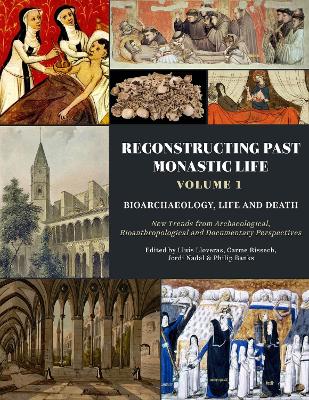 portes grátis
portes grátis
Reconstructing Past Monastic Life: Volume 1: Bioarchaeology, Life and Death
New Trends from Archaeological, Bioanthropological and Documentary Perspectives
Rissech, Carme; Nadal, Jordi; Lloveras, Lluis; Banks, Philip
Casemate Publishers
03/2025
208
Mole
9798888571736
Pré-lançamento - envio 15 a 20 dias após a sua edição
Descrição não disponível.
Introduction by the editors
Part 1: State of health and human remains
1. Unusual and exuberant dental calculus in a nun (18th/19th centuries) from Santa Catalina de Siena, Belmonte (Cuenca, Spain): oral/joint dysfunction or facial paralysis?
Alvaro M. Monge, Natasa Sarkic, Laura Gonzalez, Jesus Herrerin, Antonio Pereira and Ana Luisa Santos
2. I was not good enough for man, and so am given to God: congenital deformations and early childhood pathologies in female monastic populations in the Iberian Peninsula
Natasa Sarkic, Rosa Dinares, Lucia Munoz and Jesus Herrerin
3. Death, war and pilgrimage: traumatic injuries from a medieval multiple grave at San Miguel de Aralar (Navarre, Spain)
Emma Bonthorne, Francisco Valle de Tarazaga and Mikaila Walke
4. Disabled individuals in a medieval Belgian Cistercian monastic community: a palaeopathological perspective
Mathilde Daumas, Caroline Polet and Stephane Louryan
5. A highranking cleric with arterial calcification: vascular disease in medieval England
David BennettJones and Louise Loe
Part 2: Life pathways in monastic contexts
6. Unveiling the past: bioanthropological insights into life and death at the Santa Caterina friary in the 13th to 15th centuries
Andrea Sanz, Andreu Falco, Lluis Lloveras and Carme Rissech
7. Life and death in Barcelona in the 9th and 10th centuries: a bioanthropological analysis of the Antics Jutjats (former Municipal Courts) site
Marta Merino, Carme Rissech and Jordi Serra
8. Bioanthropological study of human remains (14th to 15th centuries) coming from the funerary unit UF228 of Santa Caterina friary in Barcelona
Carme Rissech, Marina Gasca and Anna Llaurado
9. The cloister of the monastery of Santa Maria de Roses in early modern times: the study of a secular funerary space in a religious centre
Marc Bouzas, Neus Coromina, Jordi Vivo and Lluis Palahi
10. Life and death of the Poor Clare nuns of the Holy Trinity in Monte Sant'Angelo (Puglia, southern Italy): archaeological, anthropological, pathological, botanical, entomological, textile, chemical and documentary data
G. Panzarino, E. Varotto, F.M. Galassi, A. Pastor, G. Gallello, S. Vanin, G. Carta, F. Breglia, A. Biselli, D. Pian and E. Dellu
11. The tomb of the Prioress Jeronima de Gort (1527-1601): an interdisciplinary approach to the female Hospitaller house of Santa Maria d'Alguaire
Maria Soler, Walter Alegria, Izaskun Ambrosio, Silvia Marin and Araceli Coll
12. 'The greatest evil is physical pain': an exploration of suffering from a medieval Austin Friary in Cambridge, UK
Benjamin Neil
13. The ossuary of the Teutonic monastery of San Leonardo di Siponto in Manfredonia (Puglia, southern Italy): anthropological and palaeopathological data for the reconstruction of the monastic community
G. Panzarino, E. Varotto, F.M. Galassi, D. Pian and E. Dellu
14. The daytoday life of a feminine religious community from a multidisciplinary approach: the convent of Santa Clara (Pontevedra, Spain)
Carlos Fernandez, Maria Martin, Rafael M. Rodriguez and Israel Picon
Part 3: Animals in the monastic environment
15. Footprints in the cloister: the study of icnites in tiles from Santa Maria de Pedralbes Monastery (Barcelona)
Jordi Nadal, Anna Castellano, Philip Banks, Lara Dominguis, Santiago Riera and Lluis Lloveras
16. Bilateral skull asymmetries among an ancient horse breed as a sign of high rusticity: a contribution to faunal remains studies coming from monastic contexts Pere M. ParesCasanova, Nuno Carolino, Jose V. Leite, Ruy Dantas and Susana Lopes
17. Estimation of body measurements in domestic cattle inferred from cranial values: how can this information contribute to monastic context knowledge?
A. SalamancaCarreno, P.M. ParesCasanova, G. Martinez, M. VelezTerranova and D.E. Rangel
Part 1: State of health and human remains
1. Unusual and exuberant dental calculus in a nun (18th/19th centuries) from Santa Catalina de Siena, Belmonte (Cuenca, Spain): oral/joint dysfunction or facial paralysis?
Alvaro M. Monge, Natasa Sarkic, Laura Gonzalez, Jesus Herrerin, Antonio Pereira and Ana Luisa Santos
2. I was not good enough for man, and so am given to God: congenital deformations and early childhood pathologies in female monastic populations in the Iberian Peninsula
Natasa Sarkic, Rosa Dinares, Lucia Munoz and Jesus Herrerin
3. Death, war and pilgrimage: traumatic injuries from a medieval multiple grave at San Miguel de Aralar (Navarre, Spain)
Emma Bonthorne, Francisco Valle de Tarazaga and Mikaila Walke
4. Disabled individuals in a medieval Belgian Cistercian monastic community: a palaeopathological perspective
Mathilde Daumas, Caroline Polet and Stephane Louryan
5. A highranking cleric with arterial calcification: vascular disease in medieval England
David BennettJones and Louise Loe
Part 2: Life pathways in monastic contexts
6. Unveiling the past: bioanthropological insights into life and death at the Santa Caterina friary in the 13th to 15th centuries
Andrea Sanz, Andreu Falco, Lluis Lloveras and Carme Rissech
7. Life and death in Barcelona in the 9th and 10th centuries: a bioanthropological analysis of the Antics Jutjats (former Municipal Courts) site
Marta Merino, Carme Rissech and Jordi Serra
8. Bioanthropological study of human remains (14th to 15th centuries) coming from the funerary unit UF228 of Santa Caterina friary in Barcelona
Carme Rissech, Marina Gasca and Anna Llaurado
9. The cloister of the monastery of Santa Maria de Roses in early modern times: the study of a secular funerary space in a religious centre
Marc Bouzas, Neus Coromina, Jordi Vivo and Lluis Palahi
10. Life and death of the Poor Clare nuns of the Holy Trinity in Monte Sant'Angelo (Puglia, southern Italy): archaeological, anthropological, pathological, botanical, entomological, textile, chemical and documentary data
G. Panzarino, E. Varotto, F.M. Galassi, A. Pastor, G. Gallello, S. Vanin, G. Carta, F. Breglia, A. Biselli, D. Pian and E. Dellu
11. The tomb of the Prioress Jeronima de Gort (1527-1601): an interdisciplinary approach to the female Hospitaller house of Santa Maria d'Alguaire
Maria Soler, Walter Alegria, Izaskun Ambrosio, Silvia Marin and Araceli Coll
12. 'The greatest evil is physical pain': an exploration of suffering from a medieval Austin Friary in Cambridge, UK
Benjamin Neil
13. The ossuary of the Teutonic monastery of San Leonardo di Siponto in Manfredonia (Puglia, southern Italy): anthropological and palaeopathological data for the reconstruction of the monastic community
G. Panzarino, E. Varotto, F.M. Galassi, D. Pian and E. Dellu
14. The daytoday life of a feminine religious community from a multidisciplinary approach: the convent of Santa Clara (Pontevedra, Spain)
Carlos Fernandez, Maria Martin, Rafael M. Rodriguez and Israel Picon
Part 3: Animals in the monastic environment
15. Footprints in the cloister: the study of icnites in tiles from Santa Maria de Pedralbes Monastery (Barcelona)
Jordi Nadal, Anna Castellano, Philip Banks, Lara Dominguis, Santiago Riera and Lluis Lloveras
16. Bilateral skull asymmetries among an ancient horse breed as a sign of high rusticity: a contribution to faunal remains studies coming from monastic contexts Pere M. ParesCasanova, Nuno Carolino, Jose V. Leite, Ruy Dantas and Susana Lopes
17. Estimation of body measurements in domestic cattle inferred from cranial values: how can this information contribute to monastic context knowledge?
A. SalamancaCarreno, P.M. ParesCasanova, G. Martinez, M. VelezTerranova and D.E. Rangel
Este título pertence ao(s) assunto(s) indicados(s). Para ver outros títulos clique no assunto desejado.
Introduction by the editors
Part 1: State of health and human remains
1. Unusual and exuberant dental calculus in a nun (18th/19th centuries) from Santa Catalina de Siena, Belmonte (Cuenca, Spain): oral/joint dysfunction or facial paralysis?
Alvaro M. Monge, Natasa Sarkic, Laura Gonzalez, Jesus Herrerin, Antonio Pereira and Ana Luisa Santos
2. I was not good enough for man, and so am given to God: congenital deformations and early childhood pathologies in female monastic populations in the Iberian Peninsula
Natasa Sarkic, Rosa Dinares, Lucia Munoz and Jesus Herrerin
3. Death, war and pilgrimage: traumatic injuries from a medieval multiple grave at San Miguel de Aralar (Navarre, Spain)
Emma Bonthorne, Francisco Valle de Tarazaga and Mikaila Walke
4. Disabled individuals in a medieval Belgian Cistercian monastic community: a palaeopathological perspective
Mathilde Daumas, Caroline Polet and Stephane Louryan
5. A highranking cleric with arterial calcification: vascular disease in medieval England
David BennettJones and Louise Loe
Part 2: Life pathways in monastic contexts
6. Unveiling the past: bioanthropological insights into life and death at the Santa Caterina friary in the 13th to 15th centuries
Andrea Sanz, Andreu Falco, Lluis Lloveras and Carme Rissech
7. Life and death in Barcelona in the 9th and 10th centuries: a bioanthropological analysis of the Antics Jutjats (former Municipal Courts) site
Marta Merino, Carme Rissech and Jordi Serra
8. Bioanthropological study of human remains (14th to 15th centuries) coming from the funerary unit UF228 of Santa Caterina friary in Barcelona
Carme Rissech, Marina Gasca and Anna Llaurado
9. The cloister of the monastery of Santa Maria de Roses in early modern times: the study of a secular funerary space in a religious centre
Marc Bouzas, Neus Coromina, Jordi Vivo and Lluis Palahi
10. Life and death of the Poor Clare nuns of the Holy Trinity in Monte Sant'Angelo (Puglia, southern Italy): archaeological, anthropological, pathological, botanical, entomological, textile, chemical and documentary data
G. Panzarino, E. Varotto, F.M. Galassi, A. Pastor, G. Gallello, S. Vanin, G. Carta, F. Breglia, A. Biselli, D. Pian and E. Dellu
11. The tomb of the Prioress Jeronima de Gort (1527-1601): an interdisciplinary approach to the female Hospitaller house of Santa Maria d'Alguaire
Maria Soler, Walter Alegria, Izaskun Ambrosio, Silvia Marin and Araceli Coll
12. 'The greatest evil is physical pain': an exploration of suffering from a medieval Austin Friary in Cambridge, UK
Benjamin Neil
13. The ossuary of the Teutonic monastery of San Leonardo di Siponto in Manfredonia (Puglia, southern Italy): anthropological and palaeopathological data for the reconstruction of the monastic community
G. Panzarino, E. Varotto, F.M. Galassi, D. Pian and E. Dellu
14. The daytoday life of a feminine religious community from a multidisciplinary approach: the convent of Santa Clara (Pontevedra, Spain)
Carlos Fernandez, Maria Martin, Rafael M. Rodriguez and Israel Picon
Part 3: Animals in the monastic environment
15. Footprints in the cloister: the study of icnites in tiles from Santa Maria de Pedralbes Monastery (Barcelona)
Jordi Nadal, Anna Castellano, Philip Banks, Lara Dominguis, Santiago Riera and Lluis Lloveras
16. Bilateral skull asymmetries among an ancient horse breed as a sign of high rusticity: a contribution to faunal remains studies coming from monastic contexts Pere M. ParesCasanova, Nuno Carolino, Jose V. Leite, Ruy Dantas and Susana Lopes
17. Estimation of body measurements in domestic cattle inferred from cranial values: how can this information contribute to monastic context knowledge?
A. SalamancaCarreno, P.M. ParesCasanova, G. Martinez, M. VelezTerranova and D.E. Rangel
Part 1: State of health and human remains
1. Unusual and exuberant dental calculus in a nun (18th/19th centuries) from Santa Catalina de Siena, Belmonte (Cuenca, Spain): oral/joint dysfunction or facial paralysis?
Alvaro M. Monge, Natasa Sarkic, Laura Gonzalez, Jesus Herrerin, Antonio Pereira and Ana Luisa Santos
2. I was not good enough for man, and so am given to God: congenital deformations and early childhood pathologies in female monastic populations in the Iberian Peninsula
Natasa Sarkic, Rosa Dinares, Lucia Munoz and Jesus Herrerin
3. Death, war and pilgrimage: traumatic injuries from a medieval multiple grave at San Miguel de Aralar (Navarre, Spain)
Emma Bonthorne, Francisco Valle de Tarazaga and Mikaila Walke
4. Disabled individuals in a medieval Belgian Cistercian monastic community: a palaeopathological perspective
Mathilde Daumas, Caroline Polet and Stephane Louryan
5. A highranking cleric with arterial calcification: vascular disease in medieval England
David BennettJones and Louise Loe
Part 2: Life pathways in monastic contexts
6. Unveiling the past: bioanthropological insights into life and death at the Santa Caterina friary in the 13th to 15th centuries
Andrea Sanz, Andreu Falco, Lluis Lloveras and Carme Rissech
7. Life and death in Barcelona in the 9th and 10th centuries: a bioanthropological analysis of the Antics Jutjats (former Municipal Courts) site
Marta Merino, Carme Rissech and Jordi Serra
8. Bioanthropological study of human remains (14th to 15th centuries) coming from the funerary unit UF228 of Santa Caterina friary in Barcelona
Carme Rissech, Marina Gasca and Anna Llaurado
9. The cloister of the monastery of Santa Maria de Roses in early modern times: the study of a secular funerary space in a religious centre
Marc Bouzas, Neus Coromina, Jordi Vivo and Lluis Palahi
10. Life and death of the Poor Clare nuns of the Holy Trinity in Monte Sant'Angelo (Puglia, southern Italy): archaeological, anthropological, pathological, botanical, entomological, textile, chemical and documentary data
G. Panzarino, E. Varotto, F.M. Galassi, A. Pastor, G. Gallello, S. Vanin, G. Carta, F. Breglia, A. Biselli, D. Pian and E. Dellu
11. The tomb of the Prioress Jeronima de Gort (1527-1601): an interdisciplinary approach to the female Hospitaller house of Santa Maria d'Alguaire
Maria Soler, Walter Alegria, Izaskun Ambrosio, Silvia Marin and Araceli Coll
12. 'The greatest evil is physical pain': an exploration of suffering from a medieval Austin Friary in Cambridge, UK
Benjamin Neil
13. The ossuary of the Teutonic monastery of San Leonardo di Siponto in Manfredonia (Puglia, southern Italy): anthropological and palaeopathological data for the reconstruction of the monastic community
G. Panzarino, E. Varotto, F.M. Galassi, D. Pian and E. Dellu
14. The daytoday life of a feminine religious community from a multidisciplinary approach: the convent of Santa Clara (Pontevedra, Spain)
Carlos Fernandez, Maria Martin, Rafael M. Rodriguez and Israel Picon
Part 3: Animals in the monastic environment
15. Footprints in the cloister: the study of icnites in tiles from Santa Maria de Pedralbes Monastery (Barcelona)
Jordi Nadal, Anna Castellano, Philip Banks, Lara Dominguis, Santiago Riera and Lluis Lloveras
16. Bilateral skull asymmetries among an ancient horse breed as a sign of high rusticity: a contribution to faunal remains studies coming from monastic contexts Pere M. ParesCasanova, Nuno Carolino, Jose V. Leite, Ruy Dantas and Susana Lopes
17. Estimation of body measurements in domestic cattle inferred from cranial values: how can this information contribute to monastic context knowledge?
A. SalamancaCarreno, P.M. ParesCasanova, G. Martinez, M. VelezTerranova and D.E. Rangel
Este título pertence ao(s) assunto(s) indicados(s). Para ver outros títulos clique no assunto desejado.


